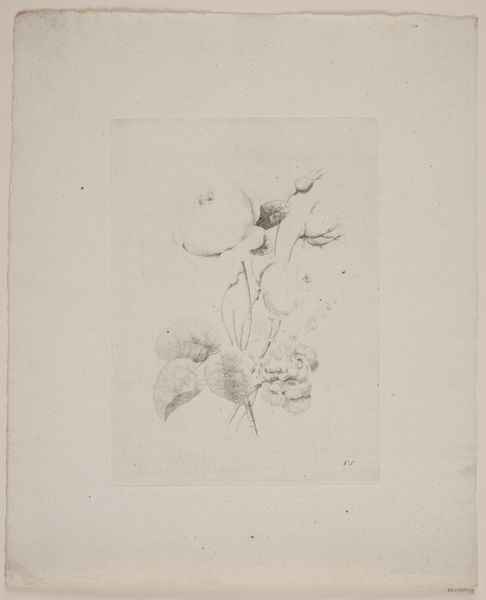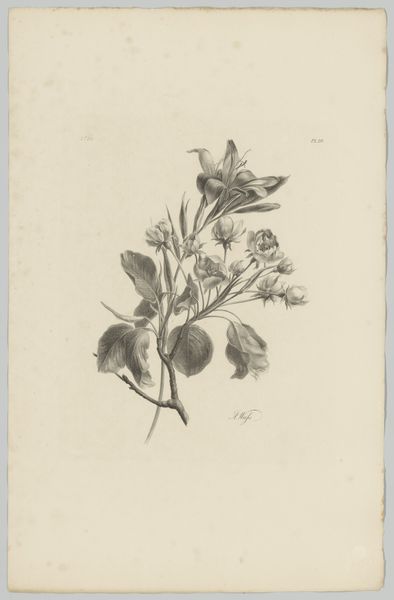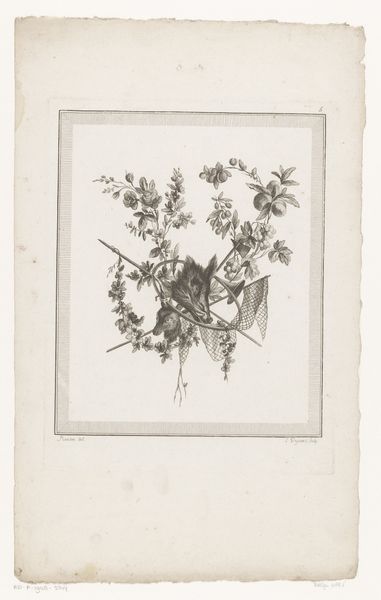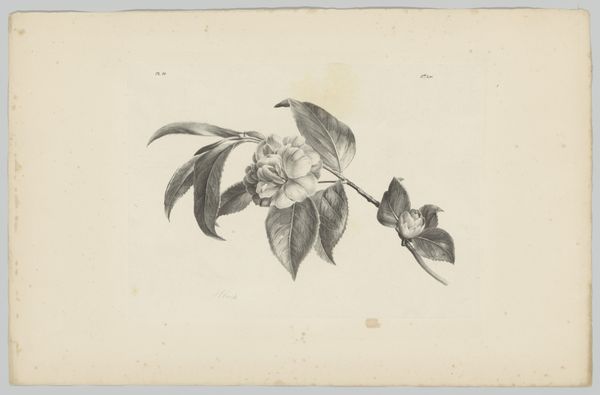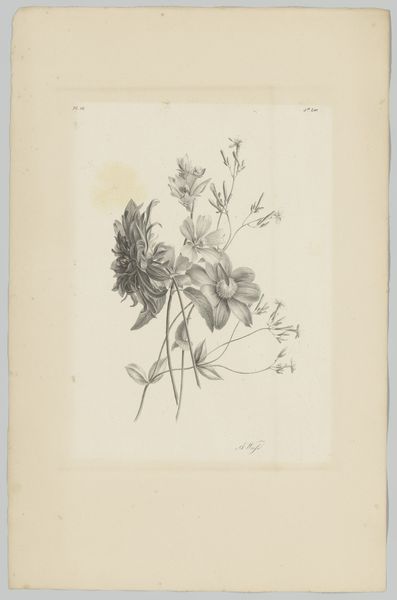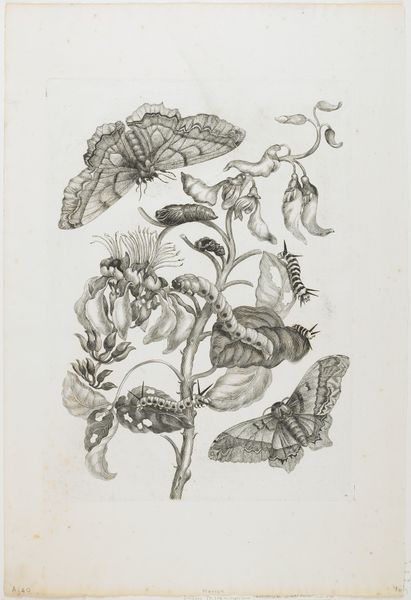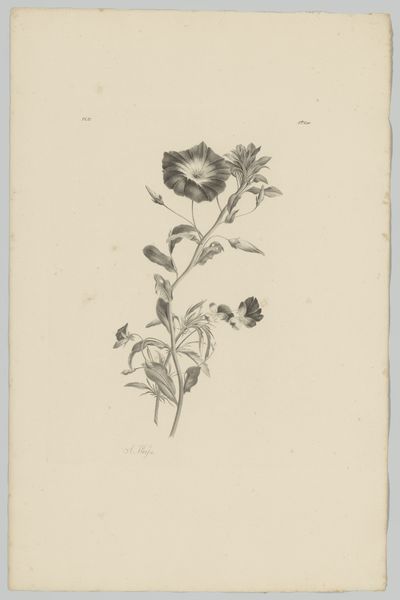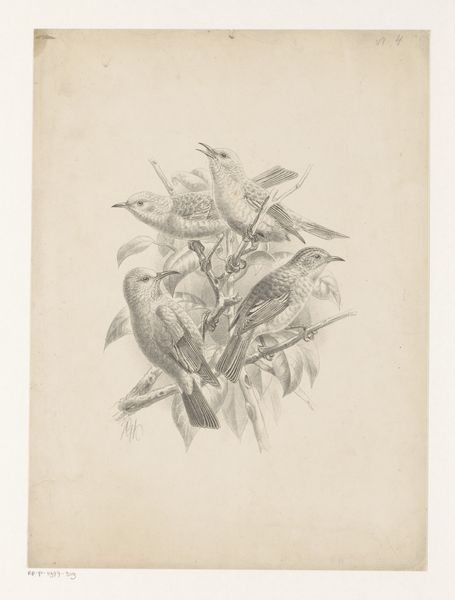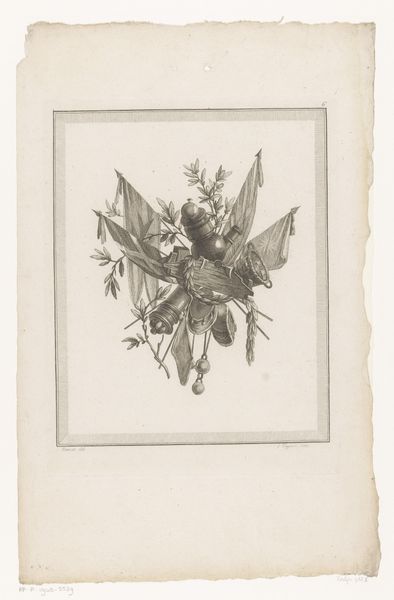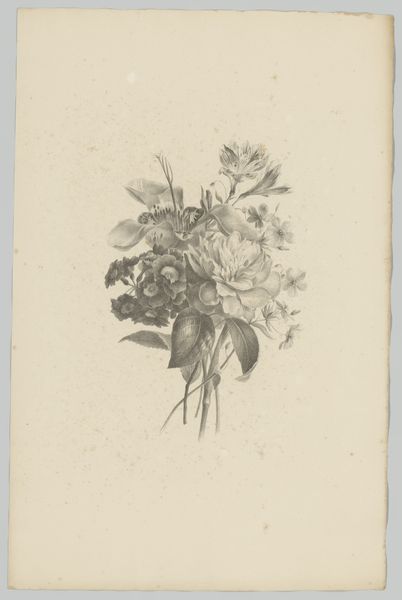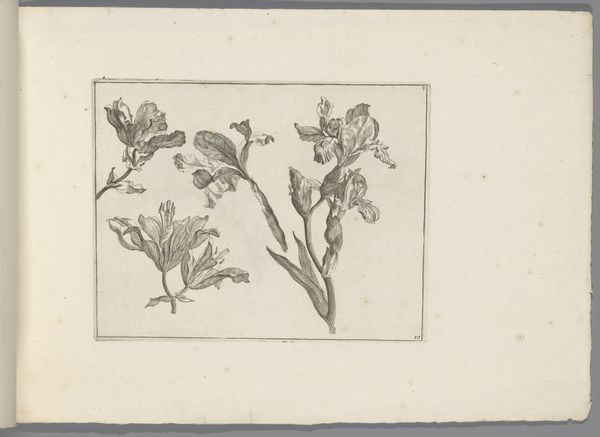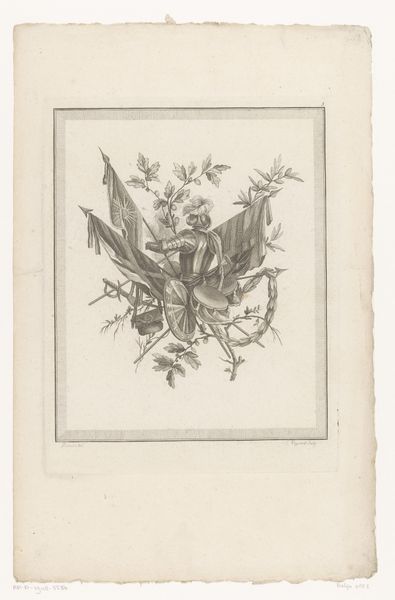
drawing, print, etching
#
drawing
# print
#
etching
#
etching
Dimensions: 212 mm (height) x 154 mm (width) (plademaal)
Editor: Here we have Frederik Schepelern's "Blomstermotiv," which translates to "floral motif," created sometime between 1796 and 1883. It’s a delicate etching, quite small in scale. It gives off a feeling of almost scientific observation. What strikes you about it? Curator: It’s fascinating how botanical studies gained popularity in the late 18th and 19th centuries. Do you think this print exists purely for scientific documentation, or is there something more going on? Consider how prints allowed for the wider distribution of imagery at that time. Who might the audience have been? Editor: That’s interesting. I guess I hadn't considered it in the context of wider distribution. It feels very personal, like a page from an artist's sketchbook, but I can see how it could have served a broader educational or even aesthetic purpose. Curator: Precisely. The rising middle class had new access to images and visual education, partly enabled by museums and public institutions that curated art with the intention of instructing society. This little print speaks volumes about democratization through the arts. Look closely—does it remind you of botanical illustration, or fine art prints destined for domestic display? Editor: Now that you mention it, it’s really a combination of both. There’s definitely an artistic sensibility in the composition, but it's also precise enough to be informative. Thanks! Curator: Indeed. Appreciating art's dual nature—its power as public engagement with visual education and scientific pursuits—allows us a deeper historical awareness. I find I’ve learned something new by your initial observations.
Comments
No comments
Be the first to comment and join the conversation on the ultimate creative platform.
